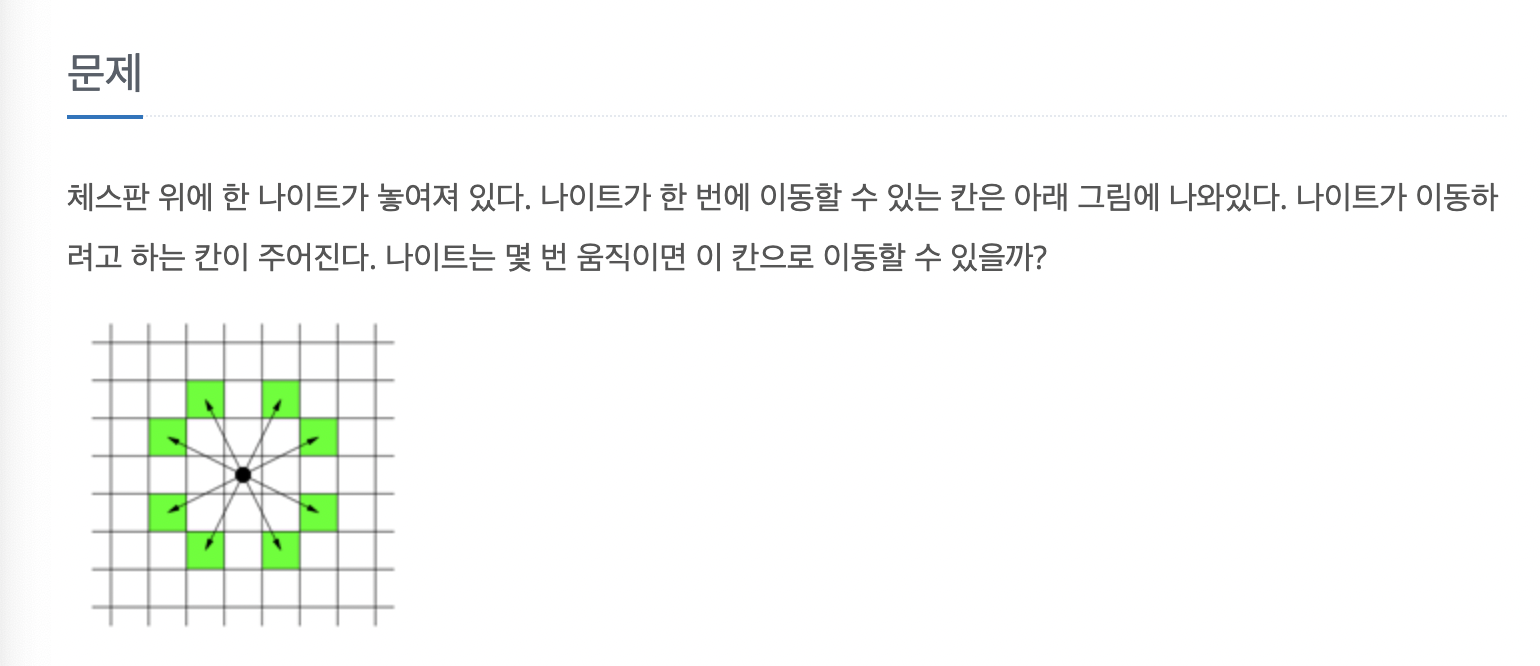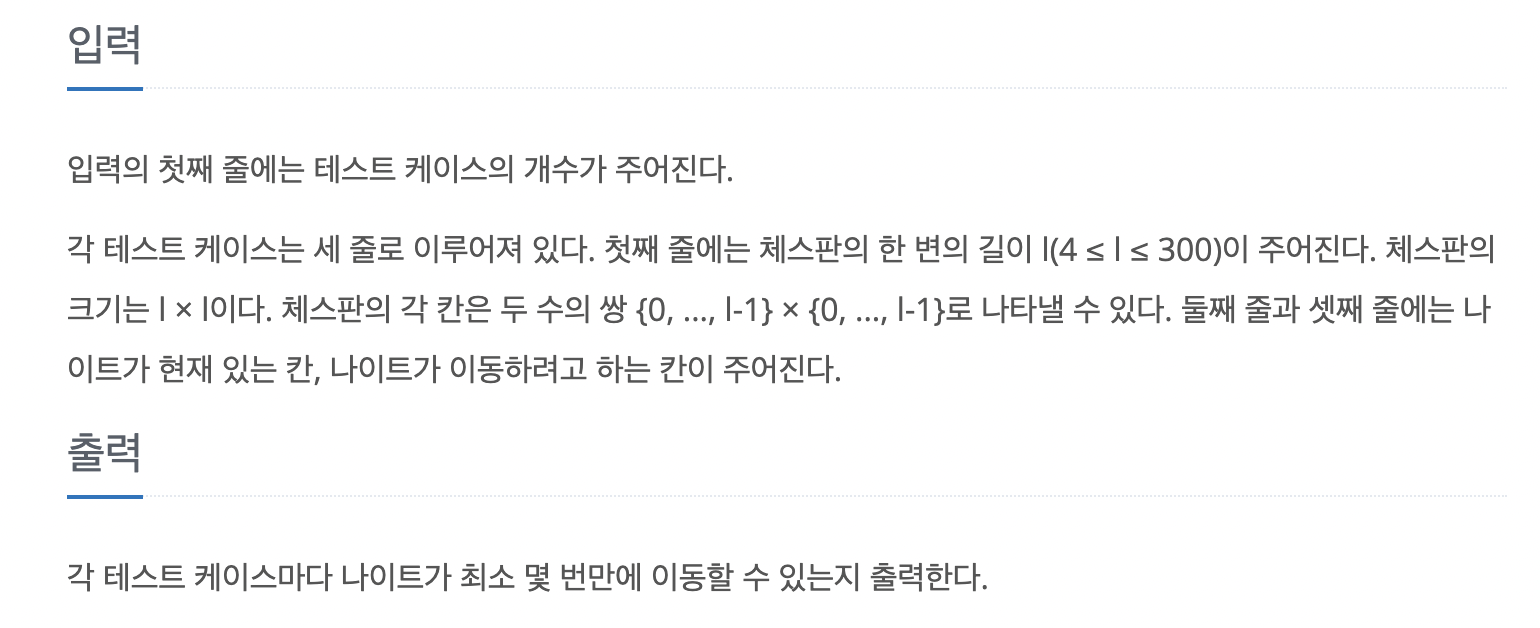문제
1. 문제 난이도: 백준 실버 1
2. 문제 요약:


3. 문제 핵심: BFS(최소 몇 번만에 이동할 수 있는지 = 최단거리)
내 코드
def bfs(start, end, l, testCase):
if start == end:
return 0
queue = deque()
queue.append(start)
while queue:
x, y = queue.popleft()
for i in range(8):
nx = x + dx[i]
ny = y + dy[i]
if nx<0 or nx>= l or ny<0 or ny>=l:
continue
if graph[testCase][nx][ny] == -1:
graph[testCase][nx][ny] = graph[testCase][x][y] +1
queue.append((nx, ny))
return graph[testCase][end[0]][end[1]]+1
from collections import deque
graph = dict()
position = dict()
testCaseNum = int(input())
for i in range(testCaseNum):
length = int(input())
graph[i] = [[-1] * length for _ in range(length)]
src = tuple(map(int, input().split(' ')))
dst = tuple(map(int, input().split(' ')))
position[i] = [src, dst]
dx = [-2, -1, 1, 2, -2, -1, 1, 2]
dy = [-1, -2, -2, -1, 1, 2, 2, 1]
for i in range(testCaseNum):
print(bfs(position[i][0], position[i][1], len(graph[i]), i))
이상 코드 참고 후, 내 코드
def bfs(start, end, l):
if start == end:
return 0
queue = deque()
queue.append(start)
while queue:
x, y = queue.popleft()
for i in range(8):
nx = x + dx[i]
ny = y + dy[i]
if nx<0 or nx>= l or ny<0 or ny>=l:
continue
if graph[nx][ny] == 0:
graph[nx][ny] = graph[x][y] +1
queue.append((nx, ny))
return graph[end[0]][end[1]]
from collections import deque
dx = [-2, -1, 1, 2, -2, -1, 1, 2]
dy = [-1, -2, -2, -1, 1, 2, 2, 1]
testCaseNum = int(input())
graph = []
for i in range(testCaseNum):
length = int(input())
graph = [[0] * length for _ in range(length)]
src = tuple(map(int, input().split(' ')))
dst = tuple(map(int, input().split(' ')))
print(bfs(src, dst, length))
배운 점
- 입력받으면서 출력도 가능
- 메모리 절약 가능(배열 적게 만들어도 됨)
